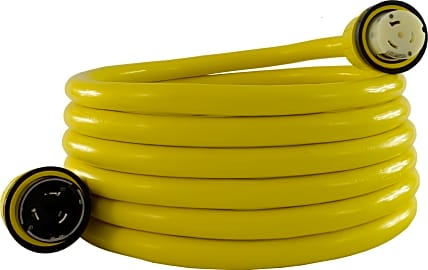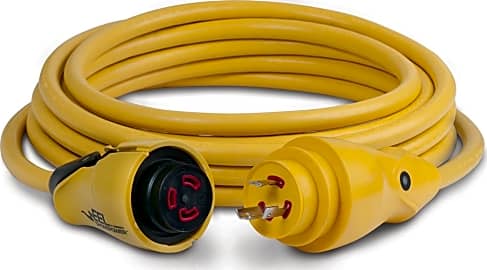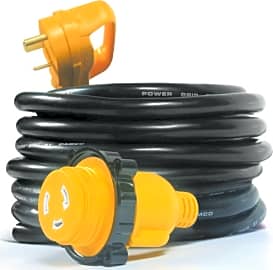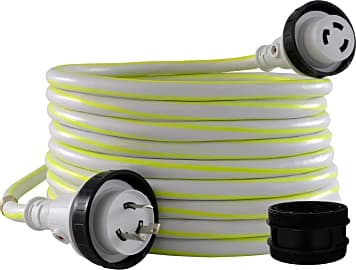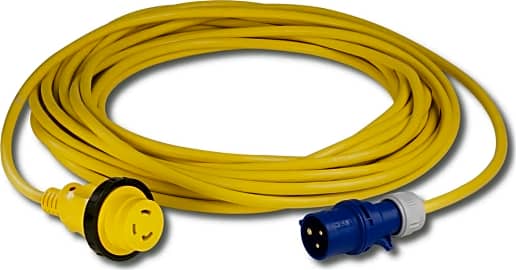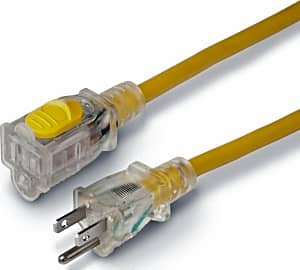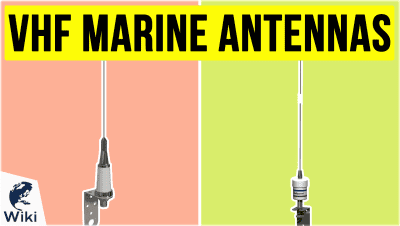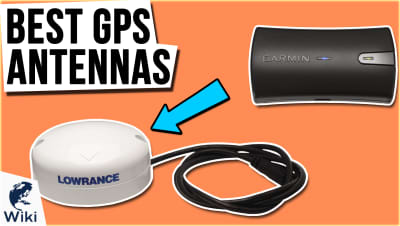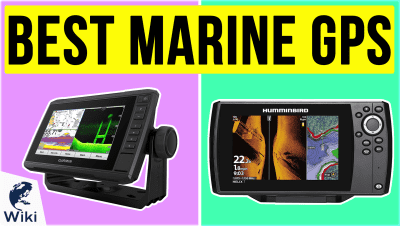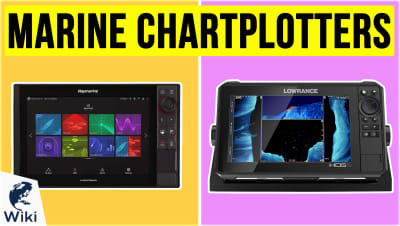The 8 Best Marine Power Cords

This wiki has been updated 45 times since it was first published in August of 2015. Is there anything more dangerous than a situation involving both water and electricity? Boat owners know this, but they also know that docking a watercraft frequently requires getting juice to it. Our selection of marine power cords, connectors and adapters are made to work with dockside supplies to help you safely deliver power to a small boat, large yacht or anything in between. When users buy our independently chosen editorial picks, we may earn commissions to help fund the Wiki.
Editor's Notes
July 05, 2020:
Finding the right set of power cords and connectors for your sea-vessel is based on the inlet plug type/s that your boat uses, as well as the outlet plug types used by the marina you intend to dock at. While you can easily inspect your watercraft’s plug points, it can be harder to determine which outlet types may be available at your destination dockside. Here are the main electrical systems utilized by sea-vessels in the US and Canada:
15A, 125V Systems use 3-pronged straight blade connectors, and supply one device like a battery charger on small trailer boats, so you can typically charge these at home with a suitable connector. However, if you do intend to use a dockside charging point, then the Marinco 15A is a great option.
30A, 125V Systems are for mid-sized boats and use locking plugs like the ones seen on the Conntek 125V and Camco 55501 PowerGrip.
50A, 125V Systems are found on larger boats and use locking plugs. Marinco EEL ShorePower has a cord option with this plug-type.
50A, 125V/250V Systems are found on large yachts and have a plug that uses two hot wires. The Conntek 4 Wire uses these plugs, and Marinco EEL ShorePower also has a cord option with this plug-type.
While newer marinas typically accommodate 30-A and 50-A plugs, older ones, and especially ones outside of North America, may not, and there are a variety of plugs that they may utilize. Add that to the variety of plugs that your boat may use, and you’re left with over 30 different plug combinations, though the you will only need a handful of these based on the plug types on your boat.
A seasoned marina-hopper prepares him- or herself by keeping a variety of adapter cords onboard, and since we already had a reasonable selection of straight power cords, I wanted to expand the list of products in this update to include a variety of adapter cords, so that you can always be prepared for any dockside plug-type architecture.
Marinco makes the best as well as the largest variety of marine power cords and adapters, and their patented EEL (Easily Engaged Lock) system makes life much easier, so where I can, I’ve included model sets with EEL, like in the Marinco EEL Y Adapters and Marinco EEL Pigtails. They’re slightly – but not significantly- more expensive than their older counterparts that use locking rings, but they’re well worth the additional cost.
Special Honors
Marinco Shore Power Before you give up on finding exactly what you were looking for, do be sure to have a look at the full catalog of Marinco Shore Power products. They have a range of options that may suit your specific needs, including a reverse “Y” adapter, a 32-amp European adapter for larger boats, and a comprehensive list of straight adapters, in case you could do without the power cord. marinco.com
A Partially Charged Environment
By World War II, active sonar systems emerged that sent out signals and charted their eventual return.
Boats actually played a meaningful role in the adoption of electricity. Shortly after Edison lit up Menlo Park, New Jersey on the last day of 1879, the lights aboard the SS Columbia became the first commercial application of the of electric light bulb. Sailors were slow to adopt electrical devices until after the sinking of the Titanic, when passive underwater listening devices aided in the detection of icebergs, as well as enemy submarines. By World War II, active sonar systems emerged that sent out signals and charted their eventual return.
Electricity is also crucial to navigation systems. Beginning with VHF transmission (that still sees extensive use today), additional long-range navigation methods including GPS, GeoNav, and GLONASS (a Russian-based global satellite network) have come online in the last half-century, giving professional and recreational sailors multiple ways to plot their courses.
For more than the last 60 years, the National Marine Electronics Association has overseen the integration of electrical engineering within the boating industry, determining standards and regulations designed to improve the performance and safety of marine electronics. As an example of their impact, the most recent NMEA 2000 specifications have set a high bar in the formation of long-range networks that can pinpoint your boat's location with remarkable accuracy.
Power On The Water
Once you've docked, you'll likely want to switch over to shore power, and in many places it's actually required. Most marinas in populated US areas supply 30 amps of AC power, with some reaching all the way up to 50 amps. While hooking up a yacht isn't conceptually different from connecting an RV to a power tree, the boat is, of course, floating in a highly conductive liquid, which adds an extra level of complexity. As such, marine electrical components are considerably beefier, designed specifically to withstand changing temperatures, corrosive salt, oxidation (such as rust), and simple shorts that might otherwise occur thanks to the presence of water.
But those harsh conditions mentioned above necessitate constant oversight, as the slightest bit of corrosion can lead to critical equipment failure and, ultimately, disaster.
In fact, pure water isn't actually a very good conductor, but when salt or other substances are present, that changes drastically, hence the litany of plastic covers, screw-on connectors, and rubber gaskets peppering a boat's electrical systems. With proper upkeep, a nautical electrical system is every bit as safe as a landlocked one. But those harsh conditions mentioned above necessitate constant oversight, as the slightest bit of corrosion can lead to critical equipment failure and, ultimately, disaster. A major cause of boat fires is simple negligence on the owner's part; it's important to give the entire vessel a walk-around before each outing, inspecting all relevant cords and connectors to ensure the system's integrity.
In that vein, the upkeep and maintenance of power cables is incredibly important if you want to keep yourself and your property safe. They're not entirely difficult to clean, and there are a lot of different ways to do it, but clean them you must. There are a variety of products designed specifically for stripping dirt, grime, and salt from electrical cables, and it's recommended you use one of these to make sure you don't damage the rubber exterior. It's guaranteed to be safe for the cord's insulation, but it doesn't have the same stripping power as a solvent like acetone or WD-40. If you do decide on using a solvent, be careful not to scrub too hard, which can damage the rubber, and be aware that a solvent will dry out the material slightly, which can shorten the cable's lifespan and lead to bad results. It's highly advisable to use a rubber and vinyl protectant of some sort after applying a solvent, as that will help restore some flexibility to the insulation's outer layer while also helping to keep it clean for longer before you need to work on it again.
Taking Care To Stay Watertight
You shouldn't have much trouble finding a set of cords and adapters perfectly suited to your needs. Units designed to move power from the shore to your vessel use 30- or 50-amp plugs that are easily distinguished from the everyday, three-pronged electrical connector. They're constructed for a watertight fit, and some have screw-on collars or twist-lock mechanisms to ensure they stay completely dry where it counts. While 50-amp systems aren't everywhere, they are becoming more popular with larger boats, and they're accommodated by an increasing number of marinas. If you find yourself at a dock whose power isn't compatible with your cord set, there are adapters available that can overcome the mismatch. Alternately, if you need more shore power and don't want to rebuild your entire setup, it's also possible to configure dual 30-amp inputs to double your shore power capacity. In any case, you need to make absolutely certain that the power cord you choose is capable of handling the current levels you'll be working with.
Units designed to move power from the shore to your vessel use 30- or 50-amp plugs that are easily distinguished from the everyday, three-pronged electrical connector.
While we're at it, know that there are some fundamental differences between marine wire and standard automotive or construction cabling. First, marine wire is actually larger than automotive wire for each given gauge size. Second, each strand inside the cable is thinner and individually tinned. The added flexibility provided by thinner strands helps to keep the wire in one continuous piece throughout the heavy use it will experience on a boat. Third, the insulation surrounding the cable is specifically designed to withstand the various corrosive substances it's likely to come into contact with at sea. Additionally, there are various military specifications regarding lightweight and zero-halogen shipboard cables that are safer and more efficient for use on boats.
Marine electrical systems aren't fundamentally different from any others, and the same goes for marine power cords. They do require extra attention to detail to ensure safe operation in the long run, but the conscientious sailor should have no problem navigating the sea of quality products and powering a host of nautical electronics.


